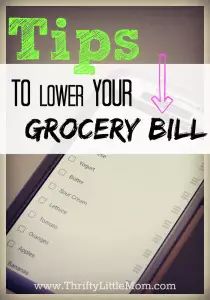How Much Should You Spend On Groceries?
Anytime people start building a budget, they have to evaluate how much they are spending on this or that. The most common question I see around forums and social media is people asking how much you should spend on groceries. Or what is normal.
The simple answer is, how much does it take to feed your family? Every single family is different, and almost everyone eats a different diet. So the better question is, “How much food do I need to feed my family?”
You find the answer to that question each day based on what goes into your family’s mouths versus the trash can.
My husband and I have been sitting down and completing a bi-monthly budget for about 1 year now. I use a cash-based system because it’s easier for me to track. Over time we realized that we needed to add money to our grocery budget because I wasn’t able to buy groceries for us based on what we were budgeting.
The only way we figured this out was because we were sitting down twice a month and doing an accurate budget. Based on my experiences and what works for us, I’m here to help you figure out how much your family should spend and ways to ultimately spend less.
Step 1-
Add up how much money you spent on groceries last month.
Step 2-
Think about any food you had to throw away due to spoilage.
Step 3-
Put the amount you spent on groceries last month in your grocery budget this month. Do (Need help with starting a simple budget? Check out my post Budgeting 101.)
Step 4- Pick a day of the week to plan a weekly menu.
You can plan your meals & shopping lists from cookbooks or even Pinterest! Consider sitting down with your grocery store weekly add as you seek out recipes for the week. Then you can plan the recipes around meats and produce that are sale.
Don’t forget awesome subscription meal planning services like Emeals. For less than a latte a month Emeals will do all the meal planning for you based on your personal dietary needs. Then you don’t even think about dinner.
Step 5- Add to your list all the items your family eats for breakfast, lunch and snacks.
Step 6- With your list in hand, go through your grocery stores website and see if any of the foods on your list match any coupons you can print or add to your customer value card. Then head over to a website like coupons.com and look around for any coupons for things already on your list. PLEASE NOTE I SAID THINGS ALREADY ON YOUR LIST. Don’t be tempted to add something to your shopping list just because there is a coupon . You’ll end up spending extra money on stuff you don’t really need.
Step 7- Shop this way for one month. This will be your “test” month.
Step 8- Add up how much you spent on groceries for that “test” month when it is over.
Step 9- Evaluate how much was eaten, how much is left and anything you had to throw away.
Step 10- Consider planning meals for the next week with any un-used, non-perishable ingredients from the month before (sometimes dinner plans change and you end up not using all your planned meal materials).
Step 11- Tweak your budget based on whether you had plenty of money left over, stayed on budget or spent more than you budgeted.
Tweaking Your Budget Based On Results
If you spent more than budgeted to make food happen for your family all month, you need to raise your budget to match that amount. If you are following a budget where you divide your expected income up over the course of a month on day 1 of budgeting you will need to find the extra money for groceries from somewhere. Meaning you may need to reduce the amount of money in another category or multiple categories to get your grocery budget up to a comfortable number. (Example: reduce your “allowance” categories, eat out and entertainment category or vacation category.) Let go of the idea that going over makes you a bad budgeter. You need room to learn what you need and where you need to make cuts. It’s a process.
If you spend the same- Look at you! You stayed on budget! Give yourself a pat on the back and see if you can find creative ways to get what you need and spend even less next month!
If you spent less- If you spent less based on your list making and waste evaluation then you can budget less for the next month for groceries. Set the amount you spent this month as next months budget and see what happens. If you find it stressful and impossible to keep that amount from month to month and you know you need more, add more money to your grocery budget.
Some people see budgets as walls confining their financial life. In reality budgets allow you to road map your future. They are a path toward your life goals.
When you know what you are spending, you simply tweak areas of the budget to make what you need- happen based on your income. When you give yourself the freedom to add money if you need it and adjust other budget categories to reflect that, it takes some stress off. It gives you the freedom to supply a true need.
How much should you spend on groceries? I’m not a financial adviser, I’m just a thrifty little mom passing along what has worked for me. It may or may not work for you but you will have to decide this based on your own consumption. Please feel free to share any thoughts or ideas you have on grocery budgets in the comments section below. If you want more tips on how to lower your grocer bill, check out my post: Tips to Lower Your Grocery Bill.

Kim Anderson is the organized chaos loving author behind the Thrifty Little Mom Blog. She helps other people who thrive in organized chaos to stress less, remember more and feel in control of their time, money, and home. Kim is the author of: Live, Save, Spend, Repeat: The Life You Want with the Money You Have. She’s been featured on Time.com, Money.com, Good Housekeeping, Women’s Day, and more!

